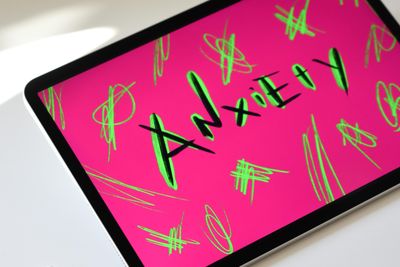by Sarah Daren
It wasn’t a new phenomenon that anxiety levels amongst people of all ages were rising - and then the past two years, which were fraught with the COVID-19 epidemic, increased political upheaval, and more sealed the deal. Anxiety is at an all-time high for people young and old. Adults, though, can sometimes experience unique challenges when they feel prolonged or clinical anxiety. Stigmas, stereotypes, lack of awareness or recognition, and inadequate support structures (especially for those who live alone or don’t have healthcare access) can make anxiety a particularly difficult adversity for some. It’s important for every adult to have a working understanding of anxiety, its causes and effects, and strategies for coping with it.
Anxiety as a Form of Mental Strain
Though nearly everyone experiences stress and anxiety at points in their life, experiencing anxiety in high severity or for prolonged periods may indicate an anxiety disorder of some kind. Anxiety disorders fit within the family of mental illnesses along with conditions like clinical depression, bipolar disorder, and schizophrenia.
A number of anxiety disorder subtypes exist that range from separation to social anxiety disorders. Most of these are clinically diagnosed and can often be treated with medication, psychotherapy, or both. Anxiety disorders can be very serious. Left untreated, they often begin to interfere with living life normally and, in moderate to severe cases, require interventions or treatment in order to make daily life manageable for people who suffer from them.
To determine whether you might be at risk of having or developing an anxiety disorder, it’s important to understand the common symptoms that accompany this type of condition. If you experience increased or enduring bouts of any of these symptoms, consult a doctor or medical professional about the possibility of an anxiety disorder: increased heart rate, rapid breathing, restlessness, difficulty falling asleep, or trouble concentrating.
Anxiety attacks are also a sign of anxiety disorders. An anxiety attack would be experienced in a scenario or setting when you were likely already feeling anxious or thinking about something that was making you afraid. These attacks can involve experiencing faintness or dizziness, shortness of breath, sweating, dry mouth, chills or hot flashes, extreme worry, restlessness, distress or fear, or numbness or tingling.
Any of these experiences are enough to raise with your primary care provider to determine whether you might suffer from an anxiety disorder of some kind.
The Ramifications of Leaving Mental Illnesses Unaddressed
Just like physical ailments or cancers, mental illnesses can be very serious. They require treatment and attention to lessen or mitigate. When left unchecked, mental health difficulties can escalate and have increasingly negative effects on the quality of your life. A strong correlation exists between experiencing mental illnesses and people who are homeless, experiencing or have experienced drug addictions, or who have served jail time. Without management and treatment, mental illnesses can become debilitating and even life-threatening.
Tools to Combat Anxiety and other Mental Stresses
A number of “tools” or strategies exist that can help you boost your mental health and fortitude. These strategies can be employed any time and can almost always provide benefits that can strengthen your mental health. If you are experiencing prolonged symptoms of anxiety or are worried about the possibility of having an anxiety disorder, there are several steps available to you that you can employ to lessen the effects of anxiety on your life and wellbeing. Whether you have been diagnosed with an anxiety disorder or have simply felt increased effects of stress and anxiousness in your life, take some time to incorporate some of these tools into your regular routine.
One way of incorporating mental health strategies in your regular routine is by incorporating simple actions that can be accomplished alone (or done with other people as well) and that provide a sense of accomplishment, bring calm, and/or allow you to engage in physical movement or artistic creativity. These elements can all aid your mental health. Ideas include bike riding, walks (especially in nature), breathing or mindfulness routines, drawing or painting, accomplishing a rote task like washing dishes or putting away laundry, allowing time for a quiet break, reading, and more. These can all serve as effective ways of improving your mental state and contributing to stronger mental health.
Similarly, activities that are communal or group-oriented in nature, involve fun and play, or incorporate things you naturally enjoy make up another family of mental health-boosting activities that can also contribute significantly to your mental state. These can include walking with a friend, attending a weekly event or support group, taking classes, volunteering, playing a recreational team sport, and more.
By being aware of the signs of anxiety disorders and proactively engaged in activities that will boost your mental health, you can mitigate your risks of having your life adversely impacted by anxiety.
About the Author
Sarah Daren has been a consultant for startups in multiple industries including health and wellness, wearable technology, nursing, and education. She implements her health knowledge into every aspect of her life, including her position as a yoga instructor and raising her two children.
